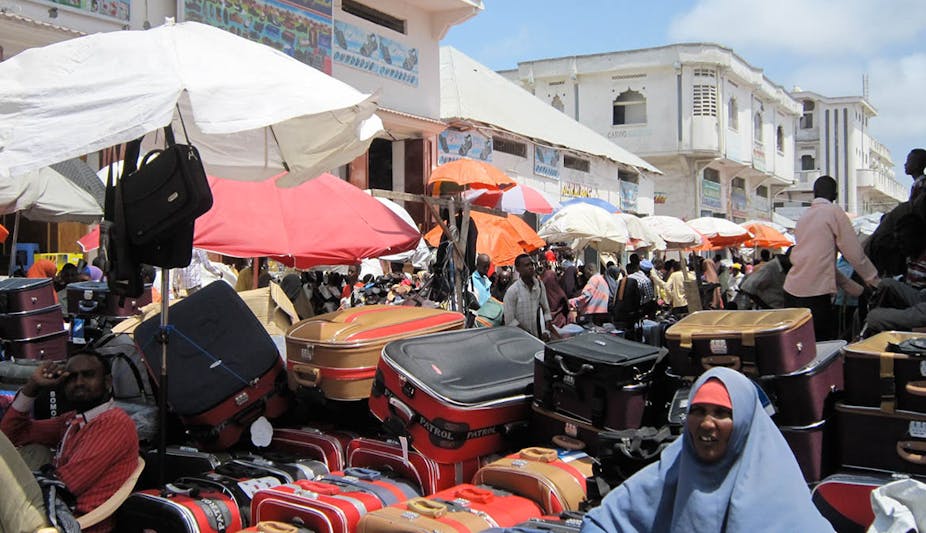A recent report by the global advocacy organisation Amnesty International painted a dire picture of the impact of the COVID-19 pandemic in Somalia. Based on interviews with health workers, government officials, and finance and debt relief experts, the report concludes that the government’s response to the pandemic has been “wholly inadequate”. But how bad is the situation really? Dr Mohammed A. M. Ahmed answers some questions.
How has Somalia been affected by the pandemic?
It has been badly affected. My colleagues and I have been tracking the situation since the first cases were reported in March last year. We have been doing consecutive online surveys to assess the adherence to COVID-19 preventive measures and its impact on Somalis between April 2020 and January 2021. These are still continuing.
Strict lockdown measures were introduced. These included closing schools, non-essential businesses, bars and restaurants, closing borders, forbidding large gatherings, restricting travel and imposing a curfew. The measures have had a devastating effect on daily labourers and low-income communities. Many Somalis rely on daily paid jobs for subsistence.
In addition to the health-related impact of morbidity and mortality, I believe the COVID-19 pandemic consequences were more disastrous than the disease itself. This is because, as with other low- and middle-income countries, there has been no government support for people. I wouldn’t be surprised if hunger was killing more people than the virus.
According to officially confirmed cases there were 16,831 in early September, and 913 confirmed deaths. But the real burden of the disease is way underestimated. There are a number of reasons for this. But the main one is that not all the laboratories in the country are included in the tally. In addition, only a few laboratories can test for COVID-19.
What have been the biggest obstacles?
The biggest obstacle is that the country has not been able to establish a strong health system because of three decades of civil war. Basic healthcare access is limited.
Nevertheless, the Somali government’s response was very good. The ministry of health, in collaboration with international organisations, worked hard to put a comprehensive plan in place.
The government formed a COVID-19 task force. It also issued travel restrictions for passengers coming from high-risk countries, prepared and set up 14 institutional quarantine sites, and dedicated one hospital to handle emergency cases in need of ventilation.
Preventive measures included closing academic institutions and banning large-scale social gatherings.
Despite these efforts, cases continued to rise.
The pandemic found Somalia in a rebuilding stage with most of the population living in heavily crowded and poorly constructed houses and large camps for internally displaced persons with limited access to testing and healthcare.
Our initial observations were that a lot of the preventive measures were ignored due to strong cultural or religious beliefs. For example, people continued to gather in mosques several times a day for prayers, and meet a funeral services without proper personal protective equipment.
What steps must the government take?
The government must strengthen healthcare infrastructure so that people can get basic emergency healthcare.
It must also establish a public health surveillance system that initiates continuous, systematic collection, analysis and interpretation of health-related data.
Most healthcare in the country is privatised. The World Health Organisation estimates that about 80% of the need for medicine and health products is covered by the private sector. The sector is poorly regulated and concentrated in urban areas. But I believe the private health sector can contribute to better access to healthcare if it’s operationalised, organised and regulated. There is, therefore, a need to integrate health information between the two sectors. Without this numbers will continue to be under-reported.
Having this type of data would:
serve as an early warning system for impending outbreaks
enable monitoring and evaluation of the impact of an intervention
help track progress towards specified goals
monitor and clarify health problems, which in turn will guide priority-setting and planning and evaluation of public health policy and strategies.
In a recent study my colleagues and I assessed the COVID-19 vaccine acceptability. Most of the participants – 76.8% – said they would accept vaccination. The respondents were mainly young people and did not qualify for the vaccine. Vaccination is restricted to high-risk groups. These include the elderly, healthcare workers and people with co-morbidities. Therefore the government should lobby for more vaccines to be available to those who are willing to be vaccinated and not only limit it to the high-risk groups. In Somalia young people make up most of the population. Older people over 65 years comprise only 3%.

